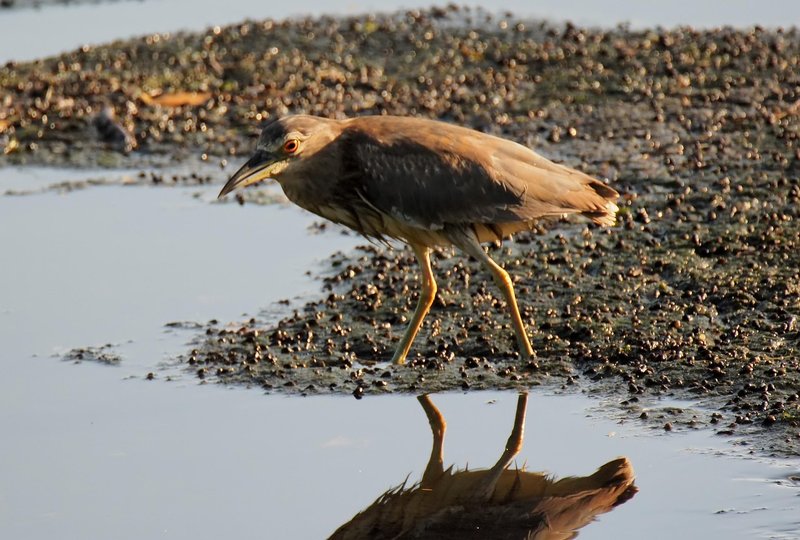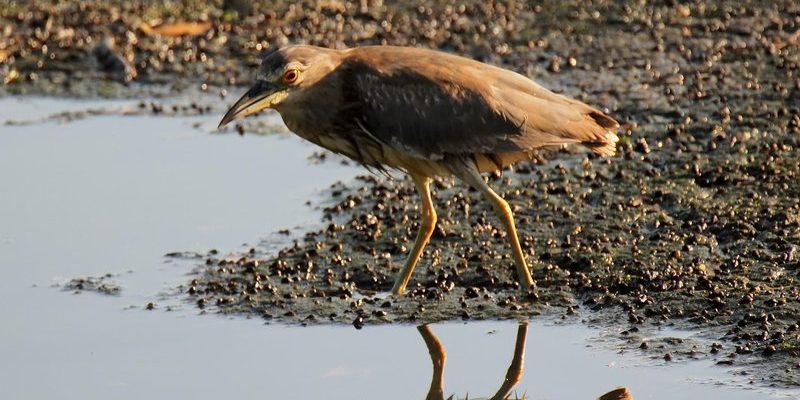
So, let’s dive into the world of herons. We’ll explore whether they’re threatened or endangered, what might be causing these issues, and why it all matters. You’ll get the full picture so you can appreciate these marvelous creatures even more.
Understanding Heron Species
Herons belong to the family Ardeidae, which includes various species such as the Great Blue Heron and the Snowy Egret. Each species has its own unique characteristics and habitats. For example, the Great Blue Heron is known for its striking blue-gray feathers and can often be seen around lakes and marshes. On the other hand, the Snowy Egret, with its stunning white plumage, prefers warm coastal areas.
Each heron species has adapted to its environment over thousands of years. These adaptations help them hunt for food and find safe nesting spots. Knowing the differences between species is essential as it helps conservationists understand which herons are doing well and which are struggling to survive.
Why Some Heron Species Are Threatened
So, why are some heron species facing challenges? Honestly, it often comes down to habitat loss. Urban development, pollution, and climate change are major culprits. As wetlands are drained for agriculture or buildings, herons lose their homes. These birds rely on specific habitats to find food and raise their young, so when those areas disappear, their populations can dwindle.
Another significant threat comes from pollution. Chemicals that run off into rivers and lakes can poison fish, which are a primary food source for herons. Plus, plastics and other trash can harm these birds directly or disrupt their food chains.
Endangered vs. Threatened: What’s the Difference?
You might be surprised to learn that “endangered” and “threatened” aren’t interchangeable terms. An endangered species is at a severe risk of extinction, while a threatened species could become endangered in the future if current conditions continue. Think of it as a warning sign—like a yellow light before the red.
For example, the California least tern is considered endangered because its numbers have dramatically declined. Meanwhile, the Black-crowned Night-Heron, which faces threats, is classified as threatened but still has a larger population. Understanding this distinction can help us better assess the urgency of conservation efforts for each species.
Heron Conservation Efforts
Conservationists are hard at work to help protect herons and their habitats. Various organizations focus on preserving wetlands, which are essential for herons and countless other species. By restoring degraded areas and creating new habitats, they’re giving herons a fighting chance.
In many regions, legislation also plays a role in protecting these birds. Laws aimed at controlling pollution and regulating development near critical habitats are essential. These efforts can help ensure that herons have a safe environment to thrive.
Impact of Climate Change on Herons
Climate change is a growing concern for wildlife, including herons. Rising temperatures and changing weather patterns can affect their habitats and food sources. For example, extreme weather events, like floods or droughts, can disrupt nesting sites and reduce fish populations.
Furthermore, changing water levels in wetlands can directly impact where herons can hunt and nest. If these areas become too dry or too flooded, herons may struggle to find the right conditions for their survival.
How You Can Help Protect Herons
You don’t have to be a scientist to help protect herons. There are simple steps anyone can take to contribute to conservation efforts. One of the easiest ways is to reduce plastic use. By minimizing plastic waste, we can help keep waterways cleaner and safer for birds and other wildlife.
Another impactful option is to support local conservation organizations. Many groups focus on protecting wetlands and educating people about the importance of these habitats. Donations or even volunteering your time can make a significant difference.
Even simple changes in your own backyard can help. Planting native vegetation can provide food and shelter for herons and other wildlife. Creating a small pond can also attract herons looking for a place to hunt.
The Importance of Education and Awareness
Educating ourselves and others about herons is crucial for their future. By understanding these magnificent birds and the challenges they face, we can advocate for better protections and policies. Sharing information through social media, community events, and local schools can raise awareness and inspire collective action.
Here’s the thing: when we get involved and spread the word, we not only help herons but also contribute to the health of our ecosystems. Every creature plays a role, and when we protect herons, we’re helping the entire environment.
Herons, with their graceful presence and essential role in our ecosystems, deserve our attention and protection. While some species are doing well, others are threatened by habitat loss, pollution, and climate change. By understanding the differences between endangered and threatened species, we can take informed actions to help.
Through conservation efforts, education, and personal action, we can all play a part in ensuring that these beautiful birds continue to thrive. So next time you see a heron gliding over the water, remember that it represents not just a stunning part of nature, but also a reminder of the collective responsibility we share to protect our planet’s wildlife. Together, we can make a difference for herons and many other species that rely on our efforts.

